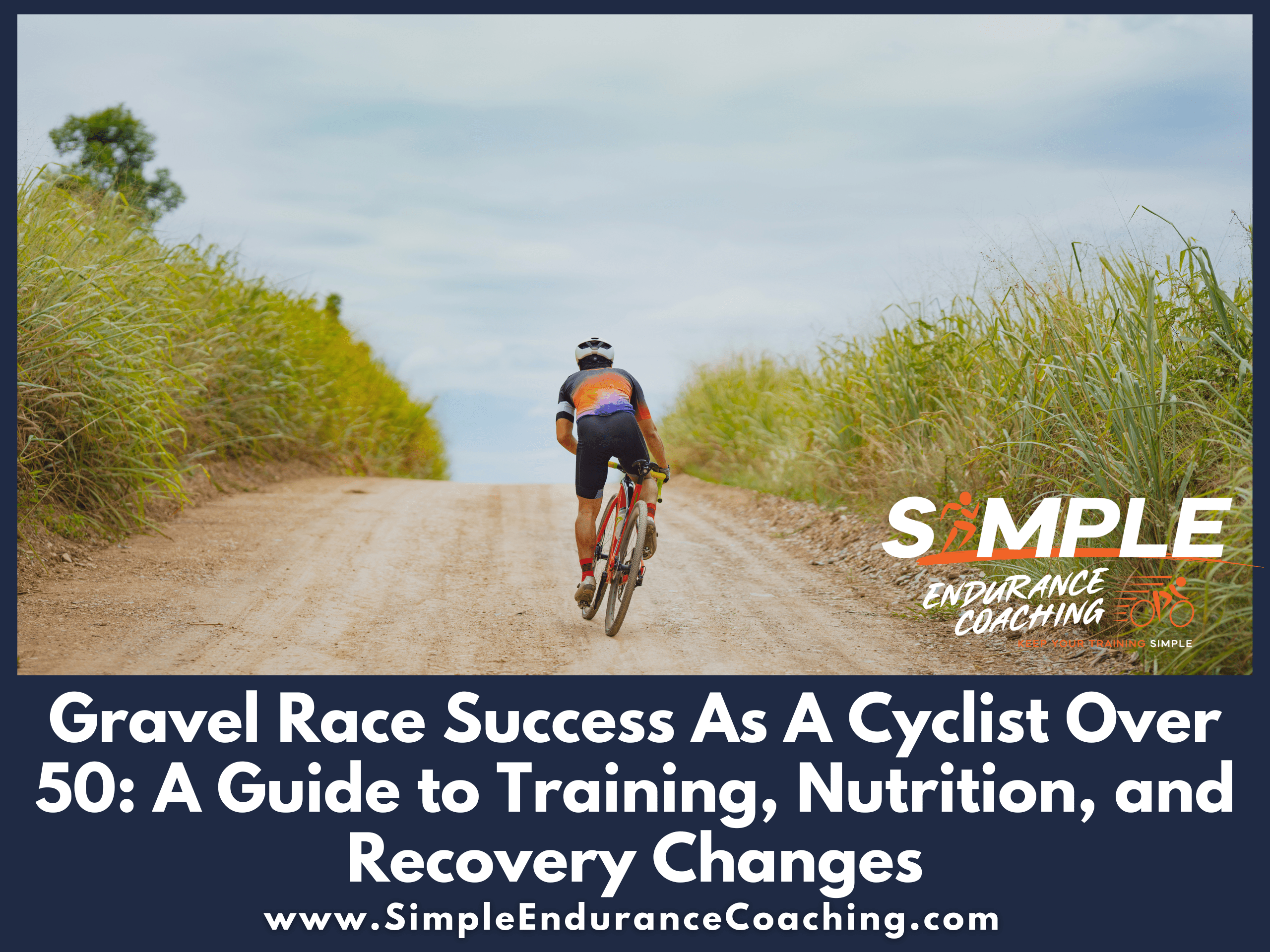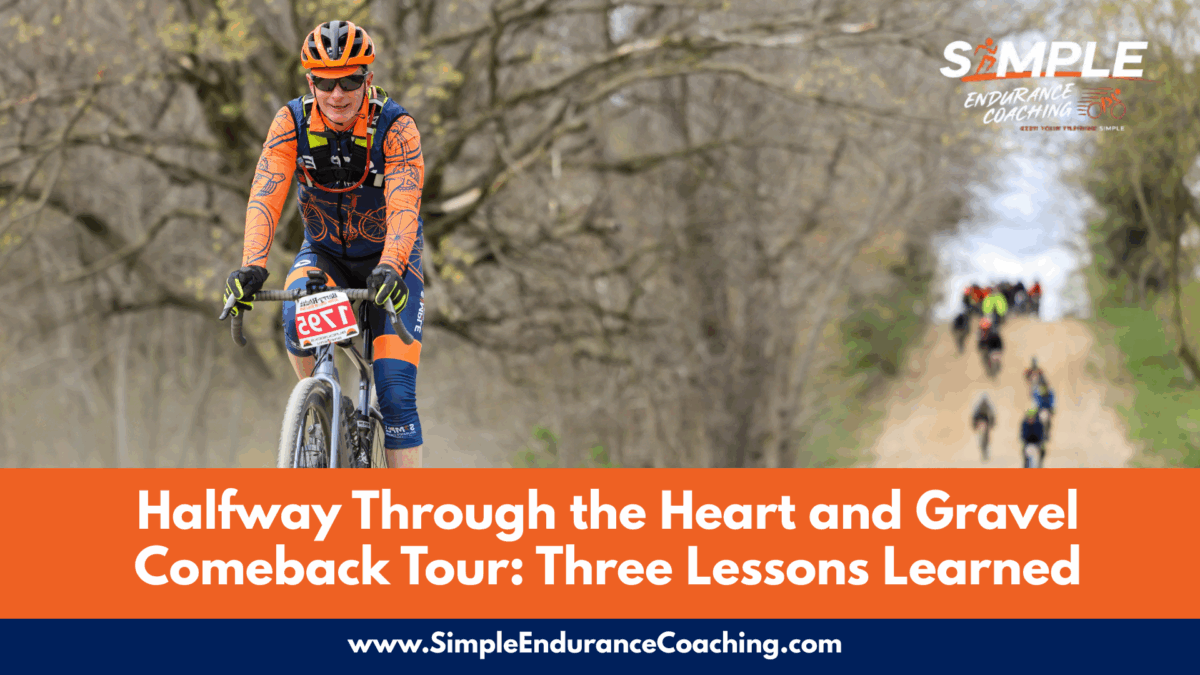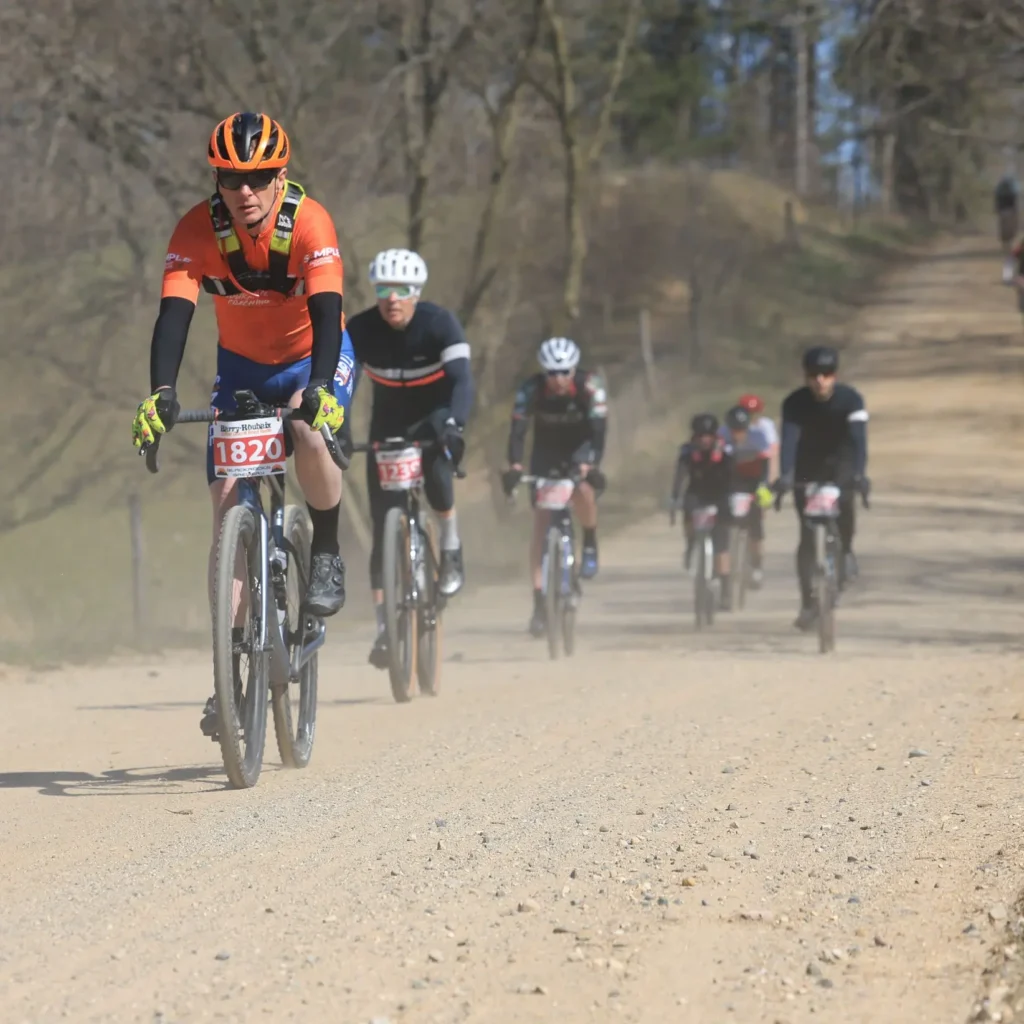Gravel Race Success As A Cyclist Over 50: A Guide to Training, Nutrition, and Recovery Changes
Cyclists over 50 are putting in some of their best performances at long gravel races.
While we may not be able to compete with the 20-year-olds at the pointy end, older men and women can complete and excel at gravel races of all lengths.
Whether training for improved health, competition, or personal growth, gravel racing is a great sport for those of us who are older than 50.
For older cyclists, though, there are some key differences in training, strength training, and nutrition that we need to understand to adapt.
This is the seventh in a series of articles about gravel racing.
Blog post #6: Hydration and fueling for a gravel century
Blog post #5: Strength training for gravel cycling performance
Blog post #4: Using intervals to improve performance
Blog post #3: Using the 80/20 model to schedule workouts.
Blog post #2: Building a base for gravel racing performance
Blog post #1: Five keys to training for gravel racing

Maintain endurance miles
We have discussed the importance of base building to improve aerobic capacity and fitness.
Start with an endurance phase, gradually increasing your mileage each week to build endurance without overtraining.
If you haven’t been riding long, it’s critical to be consistent in your training and do most of your riding at zone 2 endurance pace.
This means building up long endurance days.
You don’t need to ride a century to get ready for a century, though.
You can do fifty-mile rides back to back on a weekend, for example.
But get the long rides in to practice your nutrition and get your butt used to long hours in the saddle.
Make sure you include rest and recovery
Incorporate rest weeks to allow your body to recover and adapt.
As a master cyclist, the key to endurance training over 50 lies in listening to your body and allowing for adequate recovery.
Recovery time is longer as we age, so incorporating more rest days into your training plan is essential.
We must take the time to properly recover since it takes longer to repair the muscular damage we do.
On the rest days, do some active recovery like taking a walk, doing yoga, or swimming.
Intervals are more important than ever
Intervals are even more important for gravel cyclists over 50
As we age, we lose muscle mass and strength.
So we need to do the kind of high-intensity intervals that stimulate a variety of muscle fibers.
VO2 work and intervals done above the second threshold will recruit and strengthen fast-twitch fibers that tend to weaken and disappear with age.
We talked about intervals in article #4 in the series here.
Get in the gym and lift weights
Along with the challenging intervals, cyclists over 50 need to be in the gym lifting weights.
We need full-body strength training to prepare our body to be ready for the challenges of gravel racing.
This means two to three sessions a week in the gym.
Heavy weights also appear to stimulate hormone production, especially testosterone which helps to build and maintain muscle mass.
Focus on core strength, leg power, and balance to improve bike handling, power output, and injury resistance.
Strength training also helps to prevent injuries by correcting imbalances.
Cyclists tend to have strong quad muscles, but less activated and strong glute muscles, so doing deadlifts and single-leg Romanian deadlifts will strengthen glute muscles.
Also, upper body push and pull and core exercises need to be included.
Different nutritional needs
Cyclists over 50 have different nutritional requirements when preparing for and participating in endurance events like a 100-mile ride, compared to their younger counterparts.
These differences are primarily due to changes in metabolism, body composition, nutritional needs, and recovery times associated with aging.
Here are key nutritional considerations for cyclists over 50:
- Increased Need for Protein
- Muscle maintenance: Older adults experience a natural decline in muscle mass and strength, a condition known as sarcopenia. To combat this, a higher intake of protein is recommended to support muscle repair, maintenance, and growth. Consuming protein-rich foods or supplements before and after long rides can aid in muscle recovery and adaptation.
- Protein distribution: It’s also beneficial for older cyclists to distribute their protein intake evenly throughout the day, aiming for about 20-30 grams of high-quality protein per meal to maximize muscle protein synthesis.
- Calcium and Vitamin D. Bone health: With age, the risk of osteoporosis increases, making calcium and vitamin D crucial for bone health. Dairy products, fortified foods, leafy greens, and fish are excellent sources. Vitamin D is also synthesized through sun exposure, so outdoor training can contribute to this need.
- Antioxidant-rich foods. Reducing oxidative stress: Endurance cycling can increase oxidative stress, which may impact older adults more significantly. A diet rich in antioxidants (found in fruits, vegetables, nuts, and seeds) can help mitigate these effects, supporting overall health and recovery.
- Heart health. Fats in the diet: Attention should be given to the type of fats consumed, focusing on heart-healthy unsaturated fats found in fish, nuts, avocados, and olive oil.
- Digestive Health. Fiber and gut health: A diet high in fiber from whole grains, vegetables, and fruits supports digestive health, which can be a concern for some older adults. However, I recommend easily digestible foods like gels during long rides to prevent gastrointestinal distress.
- Joint Health. Anti-inflammatory Foods: Incorporating foods with anti-inflammatory properties, such as turmeric, ginger, berries, and omega-3 fatty acids (from fish or flaxseeds), can help manage inflammation and joint pain, which may be more prevalent in older cyclists.
Stay on top of your hydration
Effective hydration strategies for endurance cycling are critical, especially for older cyclists who might have a diminished thirst response.
Develop a hydration plan that includes drinking small amounts of water or electrolyte beverages regularly throughout your ride.
Avoid waiting until you’re thirsty to drink, as this can be a late indicator of dehydration.
Cycling injury prevention for older cyclists
Doing yoga for mobility is a great way to maintain a range of motion and reduce stiffness, particularly in the hips, back, and shoulders.
I typically have my athletes do yoga two to three times a week, more if they can.
A good bike fit is also going to go a long way to enhance comfort and efficiency while minimizing the risk of strain injuries.
Check in with your doctor
It’s also important that we check in with our healthcare providers as well.
Getting regular blood work and physicals helps keep aging cyclists on track with their training progress as well as find potential issues before they become serious.
Focusing on good health will lead to good fitness.
Mental preparation for gravel events
One of the advantages we have as older cyclists is that we are wiser (allegedly!).
Sometimes, though, we can trick ourselves into thinking we can train and race like a 20-year-old, then find ourselves in a tough situation.
It’s a good thing to set realistic goals, know what you’re capable of, and build a positive mindset for training and racing.
We are far more ready to know our limitations and have fun, rather than worry about the competition.
For cyclists over 50, preparing for a 100-mile gravel race is as much about smart training and recovery as it is about endurance and strength.
By adapting your training plan to include adequate rest, focusing on nutrition, hydration, and injury prevention, and ensuring your bike is properly fitted to your needs, you’re setting the stage for a successful and enjoyable race.
Training plus experience
I’m a Level 2 USA-Cycling Coach, a certified yoga instructor, and a certified personal trainer.
I support everyday endurance athletes at Simple Endurance Coaching, based in Milwaukee.
Plus I’ve been racing gravel, road, mountain bike, and cyclocross for decades, so I’ll bring both experience and training knowledge to help you to your best gravel race performances in 2024.
I’ll be racing the Big Rivers Gravel Series, the Hungry Bear, likely the Coon Fork 40, and other gravel races this year.
I’m always available for a free 30-minute Virtual Coffee to talk about your strength training, gravel racing, and your goals
Thanks, and I look forward to meeting you.





